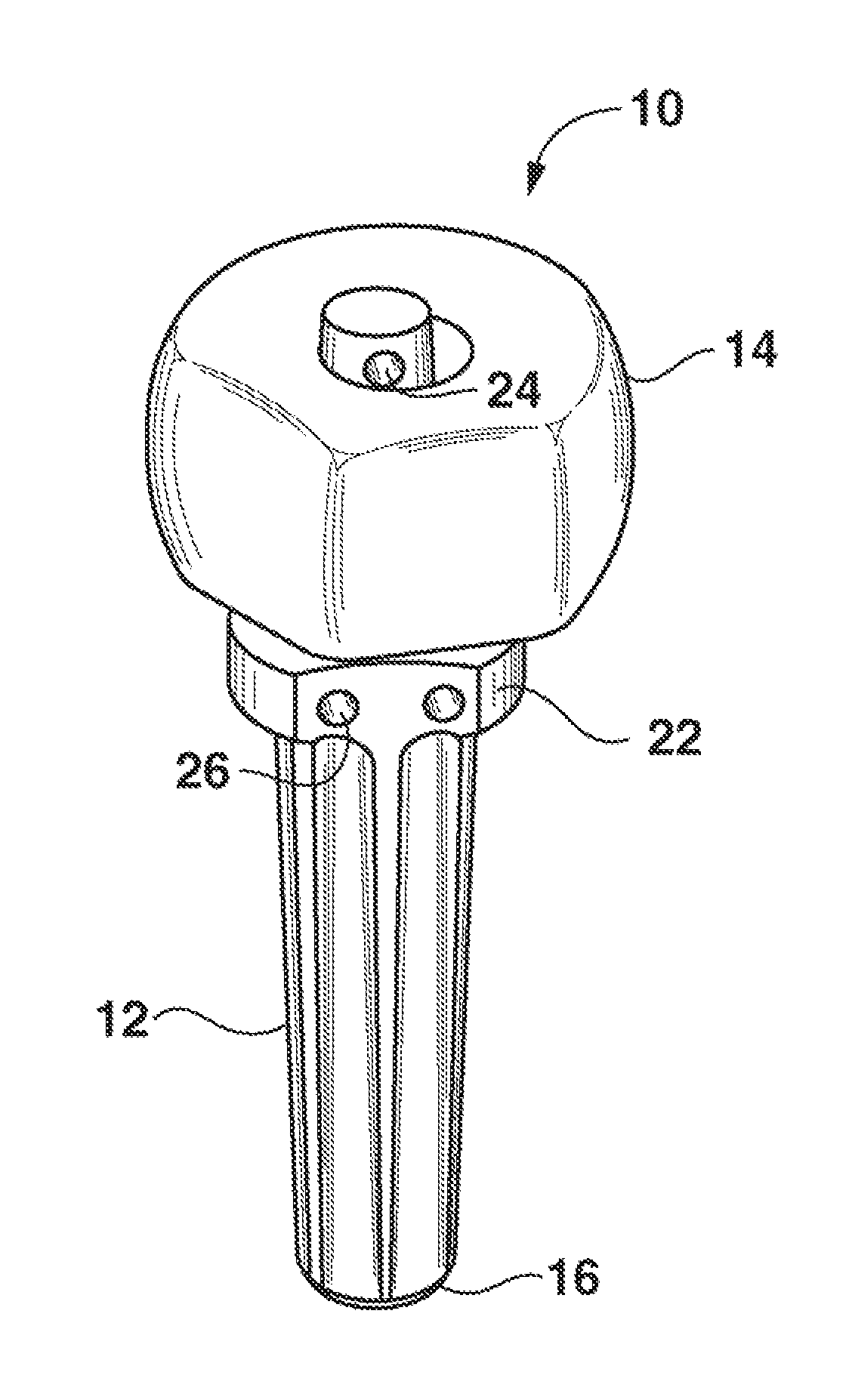Articulating implant system
a technology of articulating implants and implants, which is applied in the field of articulating implant systems, can solve the problems of fracture of the distal radius, difficult treatment of distal radius fractures, twisting force and compressing force on the forearm, etc., and achieves the elimination of the risk of component separation and the versatility of suture attachment.
- Summary
- Abstract
- Description
- Claims
- Application Information
AI Technical Summary
Benefits of technology
Problems solved by technology
Method used
Image
Examples
Embodiment Construction
[0032]The present invention is directed to an articulating implant system for fixation to a bone. The implant system comprises two components: a fixation component and an articulating component.
[0033]FIG. 1 illustrates a modular ulnar implant 10 in accordance with the articulating implant system of the present invention. The implant 10 is intended to be an anatomical replacement for the distal ulna after its resection. The modular ulnar implant 10 includes a fixation component and an articulating component. Specifically, the fixation component is a stem 12 and the articulating component is a head 14. Preferably, the stem 12 attaches to the head 14 via a morse taper.
[0034]With particular reference to FIG. 1, the stem 12, or fixation component, is elongated and formed with first and second ends, 16 and 18. The first stem end 16 is configured for fixation to a bone, specifically, for insertion into the intramedullary canal of the distal ulna to thereby anchor the modular ulnar implant ...
PUM
 Login to View More
Login to View More Abstract
Description
Claims
Application Information
 Login to View More
Login to View More - R&D
- Intellectual Property
- Life Sciences
- Materials
- Tech Scout
- Unparalleled Data Quality
- Higher Quality Content
- 60% Fewer Hallucinations
Browse by: Latest US Patents, China's latest patents, Technical Efficacy Thesaurus, Application Domain, Technology Topic, Popular Technical Reports.
© 2025 PatSnap. All rights reserved.Legal|Privacy policy|Modern Slavery Act Transparency Statement|Sitemap|About US| Contact US: help@patsnap.com



